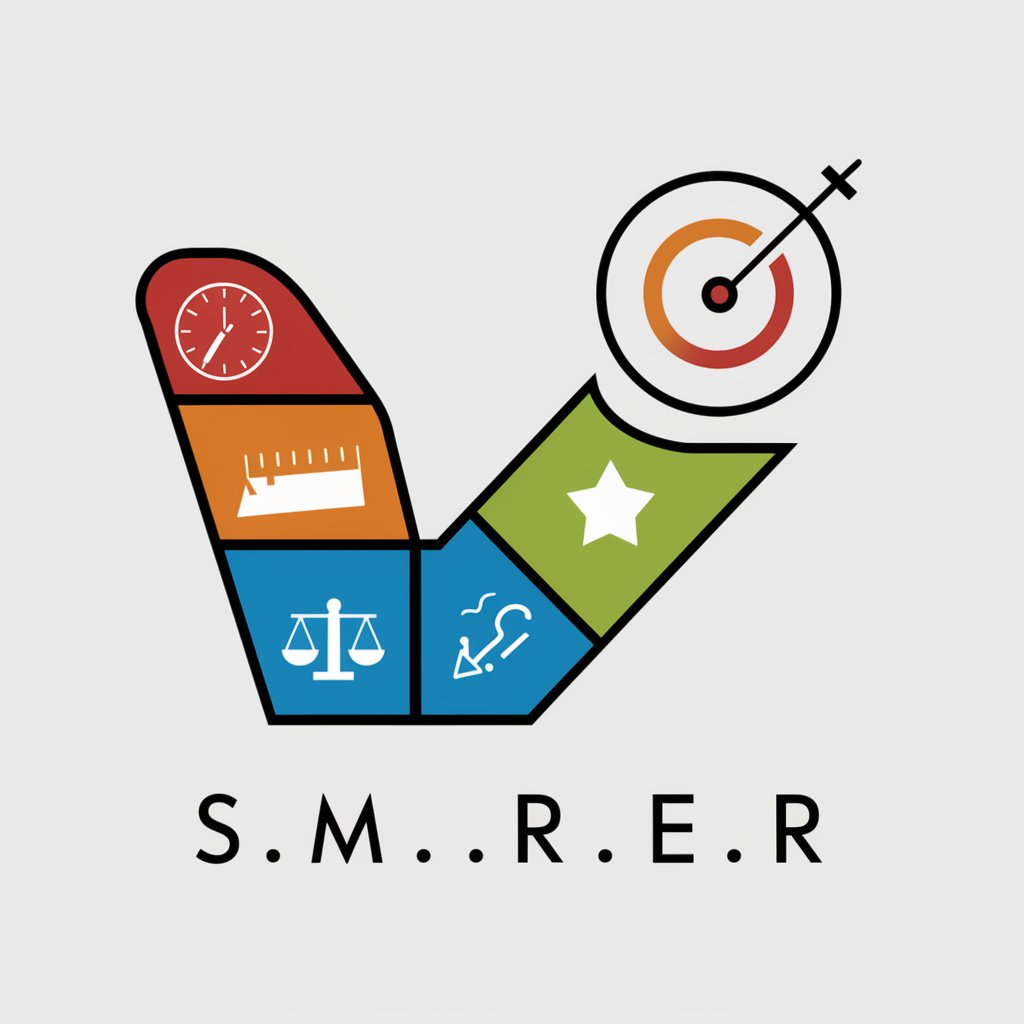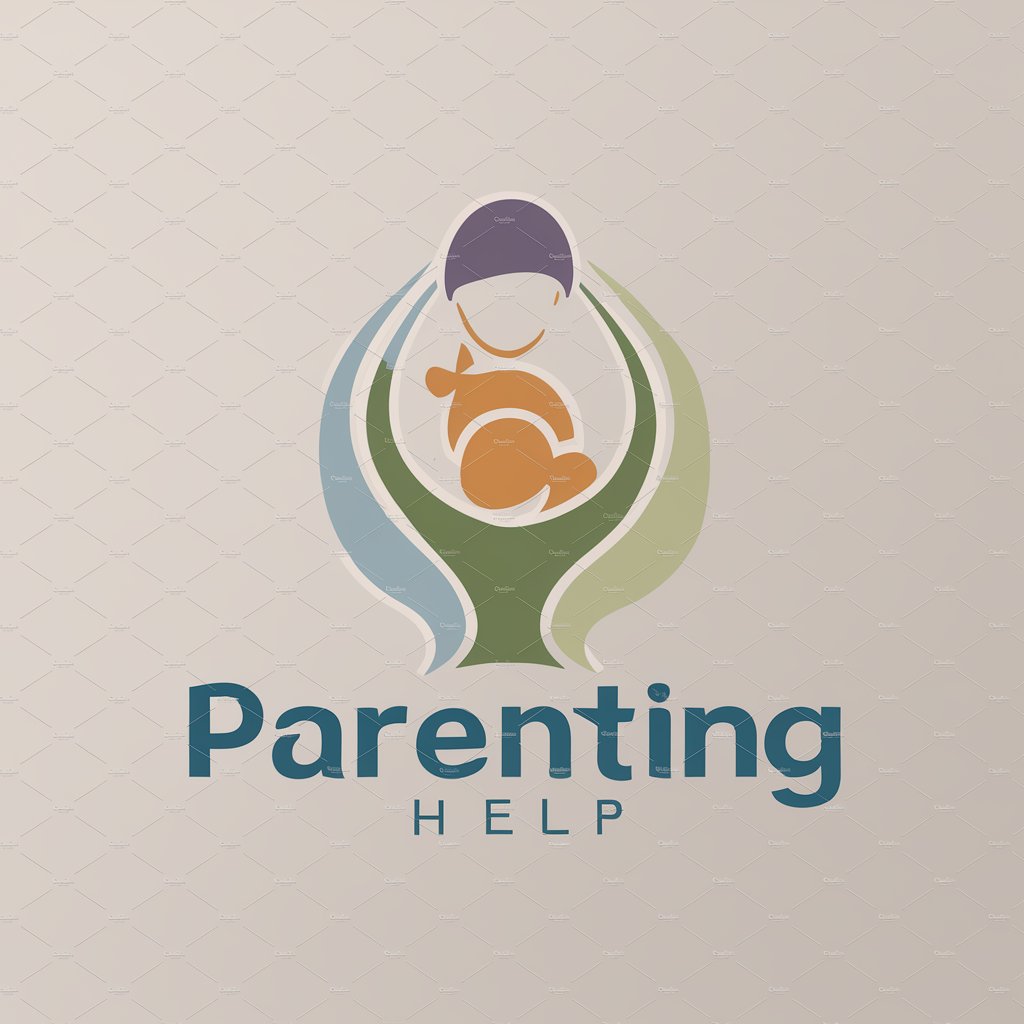Goal Setting - Structured Goal Achievement

Hey there! Ready to set and smash some goals?
Empowering Your Ambitions with AI
What specific goal do you want to achieve?
How can you measure your progress?
What steps will make this goal achievable?
Why is this goal relevant to you?
Get Embed Code
Understanding Goal Setting
Goal Setting is a specialized guidance system designed to assist individuals in crafting clear, actionable objectives using the S.M.A.R.T.E.R framework. This framework emphasizes the importance of setting goals that are Specific, Measurable, Achievable, Relevant, Time-bound, Evaluated, and Reviewed. The primary purpose of Goal Setting is to empower users to transform their aspirations into tangible achievements through structured planning and self-reflection. For example, someone aiming to improve their fitness level might use Goal Setting to establish a specific target (e.g., running a 5k race), determine how to measure progress (e.g., weekly distance run), ensure the goal is achievable and relevant to their broader health aspirations, set a deadline, periodically evaluate progress, and adjust the plan as necessary. Powered by ChatGPT-4o。

Core Functions of Goal Setting
Creating S.M.A.R.T.E.R Goals
Example
A user wants to save for a vacation. Goal Setting helps them specify the amount, create a saving plan (measurable), ensure it's realistic based on their income (achievable), align it with their desire for travel (relevant), set a deadline before vacation time (time-bound), regularly check savings progress (evaluated), and adjust the plan if they're behind schedule (reviewed).
Scenario
This function is particularly useful in personal finance planning, where clarity and regular monitoring are key to achieving savings targets.
Action Plan Development
Example
An individual aims to switch careers. Using Goal Setting, they break down this broad goal into smaller, actionable steps such as identifying required skills, enrolling in relevant courses, and setting up informational interviews with professionals in the field.
Scenario
This function is applied in career development, helping users navigate the complexities of changing professions by providing a clear, step-by-step roadmap.
Periodic Goal Review and Adjustment
Example
A small business owner sets quarterly sales targets. Goal Setting enables them to evaluate their progress at the end of each quarter and adjust their strategies accordingly, whether it means reallocating resources, enhancing marketing efforts, or revising sales targets.
Scenario
This is essential for businesses aiming for growth or operational improvements, ensuring that goals remain aligned with changing market conditions and company capabilities.
Who Benefits from Goal Setting
Individuals Seeking Personal Development
People looking to improve their personal skills, health, finances, or hobbies. They benefit from Goal Setting's structured approach to identifying clear objectives, devising a plan, and making adjustments as they progress towards their goals.
Professionals and Career Changers
This group includes individuals aiming to advance in their current career or switch to a new one. Goal Setting assists them in mapping out the steps required to achieve their professional objectives, from gaining new skills to networking.
Small Business Owners and Entrepreneurs
Owners looking to grow their business or improve operational efficiencies can utilize Goal Setting to establish clear business goals, plan actionable steps, monitor progress, and pivot strategies based on performance and market feedback.

How to Utilize Goal Setting
Start Free Trial
Initiate your goal-setting journey by visiting yeschat.ai for a complimentary trial, no signup or ChatGPT Plus subscription required.
Identify Your Goals
Clarify what you want to achieve. Whether it's personal development, career advancement, or learning a new skill, having a clear target is crucial.
Apply the S.M.A.R.T.E.R Framework
Structure your goals to be Specific, Measurable, Achievable, Relevant, Time-bound, Evaluated, and Reviewed. This framework ensures your goals are well-defined and actionable.
Create an Action Plan
Break down your goal into smaller, manageable tasks. Assign deadlines and prioritize tasks to maintain focus and momentum.
Review and Adjust
Regularly assess your progress and be prepared to make adjustments. Flexibility is key to overcoming obstacles and staying on track towards your goal.
Try other advanced and practical GPTs
Gift Assistant U.S.
Discover Perfect Gifts with AI

Parenting Help
Empowering Parents with AI

Cybersecurity Expert
Empowering Cybersecurity with AI

Expert in Sexual Pathologies
Empowering through AI-driven STD insights

Medication Advisor
AI-Powered Medication Guidance

🎮 STL Game Development Guru
Empowering Game Development with AI-Powered C++ and STL Insights

Motivation Coach
Empowering Your Goals with AI

Video Prompt Generator
Craft Your Vision with AI-Powered Video Prompts

Chat With WebPage by SmartGPTs
Unlock web insights with AI

HTML5 Design Revolution
Revolutionizing Responsive Design with AI

Weather Wizard
Empowering weather predictions with AI

Holistic Health & Fitness Tracker
Empower Your Well-being with AI

Frequently Asked Questions About Goal Setting
How does Goal Setting differ from other goal-setting tools?
Goal Setting employs the S.M.A.R.T.E.R framework, offering a unique, structured approach to setting and achieving goals, enhanced by AI to provide personalized guidance.
Can I use Goal Setting for team objectives?
Absolutely! While primarily designed for individual use, Goal Setting can be adapted for teams, encouraging collaboration and shared goal achievement through its structured framework.
Is Goal Setting suitable for short-term goals?
Yes, Goal Setting is versatile, ideal for both short-term and long-term goals. Its flexible framework supports a wide range of timeframes and objectives.
How often should I review my goals with Goal Setting?
Regular reviews are crucial. We recommend a monthly review to evaluate progress, make necessary adjustments, and stay motivated towards achieving your goals.
What if my goals change?
Goal Setting is adaptable. It's important to adjust your goals as your circumstances or priorities change. The tool supports continuous goal evaluation and revision.
